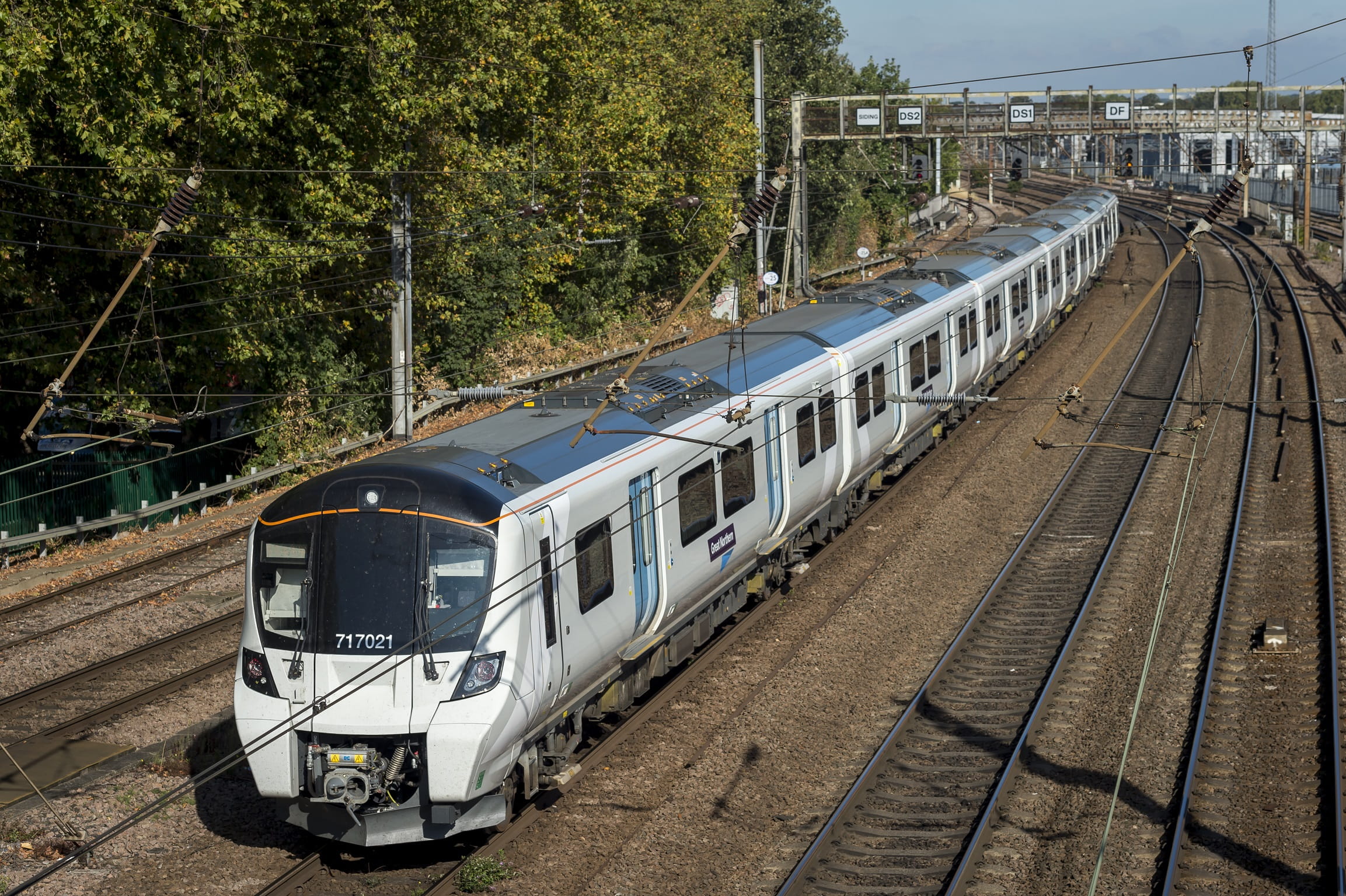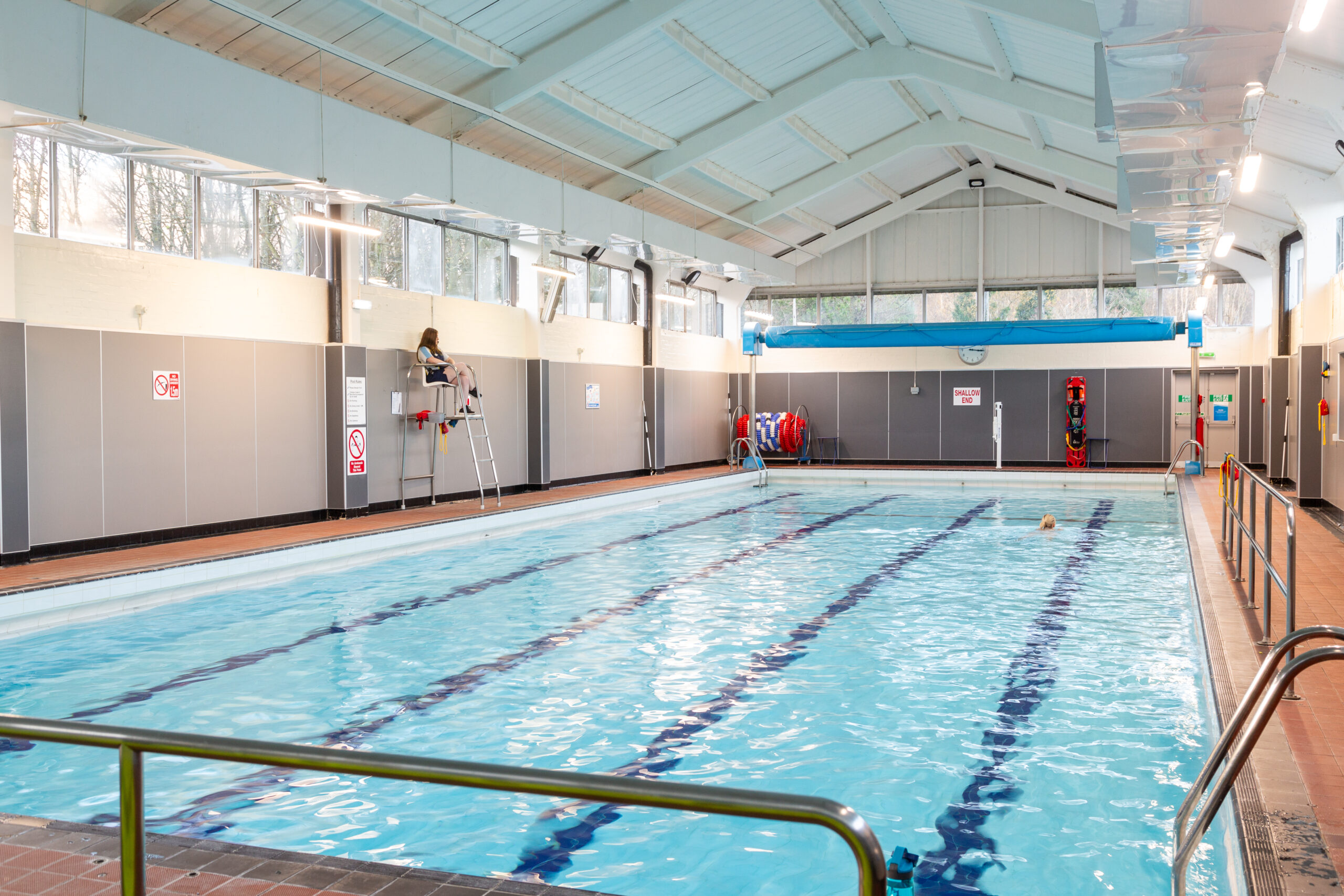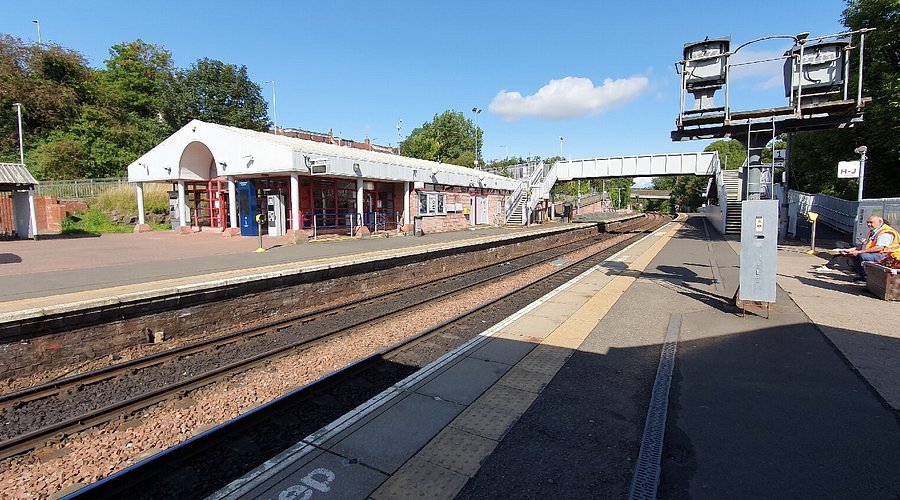Cardenden Railway Station - Scotland's Historic Rail Hub In The Heart Of Fife
Ensuring accessibility for all users to providing a convenient link to both urban opportunities and rural tranquility, the station truly embodies its purpose. As Cardenden continues to evolve, the railway station will undoubtedly remain at its heart
Author:Callum FraserJul 01, 2025669 Shares37.1K Views

Stepping onto the platform at Cardenden Railway Station, you feel more than just the rumble of an approaching train. There’s a distinct sense of place, a quiet hum of connection in this Fife village.
For many, it’s the gateway to daily commutes, a link to bustling cities like Edinburgh and Perth. Yet, for others, it’s a quiet testament to Cardenden’s enduring spirit, a bridge between its rich industrial past and its evolving community present.
Through years of observing Scotland's vital rail network, I've come to appreciate how local stations serve as genuine community arteries. Cardenden is no exception; it’s a crucial node for residents, local businesses, and visitors seeking to explore Fife's lesser-known charms.
History Of Cardenden Railway Station
Cardenden Railway Station is in Fife, Scotland. It shows both old Victorian railway building skills and the needs of today's travelers. The station opened in 1848 as part of the Edinburgh and Northern Railway's DunfermlineBranch.
It has been a part of Scottish railway history for nearly 175 years. Interestingly, when the railway company built the station, they named the whole area "Cardenden." This small train stop became important and helped grow the community around it.
The station is between Bowhill and Dundonald. It is on Station Road, making it easy to reach from nearby areas. It connects travelers to the larger Fife Circle Line network. Today, ScotRail manages the station, continuing its tradition of serving this nice part of Scotland.
Station Layout And Facilities
Platforms And Access
Cardenden Railway Station has two platforms connected by a footbridge. It keeps the traditional look while adding modern features. You can get to the station using ramps or stairs from Station Road. Platform 1 is easy to reach with a short ramp from the car park. However, Platform 2 has a steep ramp that many people find hard to use.
Some local leaders have called the steep ramp on Platform 2 "only good for mountain goats." There was even an incident where a wheelchair user had to be helped down by strangers to avoid rolling uncontrollably. Despite these issues, the station does offer some accessibility features like ramps for trains and special parking spots for disabled people.
Passenger Amenities
Cardenden is an unstaffed station, but it has basic amenities for travelers. These include:
- A waiting room for bad weather
- Help points for information
- CCTV cameras for safety, run by ScotRail
- A small car park with about 46 spaces, including 2 for disabled parking
- Cycle storage with 5 spaces (though these are not covered or watched by CCTV)
- An induction loop system for those with hearing aids
One downside is that there are no ticket machines at the station. Passengers must buy tickets from the staff on the train or online beforehand. Recent upgrades include new platforms and better signs showing train times, which improve the travelexperience.
Train Services And Connections
The Fife Circle Line
Cardenden Railway Station is on the Fife Circle Line, 27 miles north of Edinburgh Waverley. This circular route connects several towns in Fife and is key to Scotland's regional rail network. The full Fife Circle Line is about 49 miles long, linking Edinburgh to various Fife towns before returning to the capital.
In the past, Cardenden was a terminal station from 1969 to 1989 until the line to Thornton reopened, completing the circle. This change greatly improved connections for Cardenden residents, turning it into an integrated part of the loop.
Service Frequency And Destinations
Travelers at Cardenden enjoy regular train services in both directions along the Fife Circle Line. The usual service includes:
- Hourly trains westbound to DunfermlineCity
- Hourly trains eastbound to Kirkcaldy
- More trains during weekday rush hours
- Evening trains starting or ending at Glenrotheswith Thornton instead of going all the way to Edinburgh.
- Hourly Sunday services in each direction
Going to Edinburgh takes about 56 minutes via Dunfermline, much faster than the 86-minute trip via Kirkcaldy and the Fife coast. About 22-24 trains serve the station daily, giving travelers flexibility. The first train leaves around 5:07 AM, and the last one departs at approximately 10:32 PM, providing good daily coverage.
Historical Significance
Railway Heritage
Cardenden Railway Station's history is tied to Scotland's industrial past and the growth of its railways. When it opened in 1848 as part of the Edinburgh and Northern Railway's Dunfermline Branch, it was part of the rapid expansion of railroads during the Victorian era. The North British Railway took over operations in 1862, marking another chapter in the station’s story.
The station's design reflects practical mid-19th-century railway principles rather than fancy ones. Though updated over the years, it still holds its historical value through its layout and place in the community. The footbridge connecting the platforms reminds us of traditional station design, even as other parts have been modernized.
Connection To Local Mining Heritage
Cardenden's identity is closely linked to mining, and the railway played a big role in its history. As a former mining town, Cardenden depended on the railway for moving both people and coal from local mines. The station helped grow the mining industry, turning a small settlement into a busy industrial community.
In 1891, Cardenden had just 448 people, but by 2011, the population had grown to 5,533, largely due to mining and supported by railway infrastructure. Although the mines are closed now, the station remains as a reminder of this industrial past while serving today's transportation needs. This dual role makes Cardenden station significant in understanding the area's social and economic development.
Passenger Experience And Usage
Current Passenger Numbers
Cardenden Railway Station serves the local community well, but has fewer passengers compared to other stations in Fife. Recently, it ranked among the quieter stations on the Fife Circle Line, with about 25,118 entries and exits. This is much lower than busier stations like Inverkeithing (645,026) and Kirkcaldy (578,852), which are major regional transport centers.
The station's usage mainly serves the local community rather than being a major interchange point. Like many smaller stations, Cardenden saw changes in passenger numbers, especially after the COVID-19 pandemic affected rail travel across Scotland. The gradual return of passengers is part of a wider trend in the Scottish rail network as commuting and travel habits continue to change.
Traveler Feedback And Experiences
Feedback from travelers highlights both appreciation for the convenient local service and concerns about certain aspects of the facility. The main issue raised by passengers is accessibility, particularly the steep ramp leading to platform two. Residents say this ramp is difficult not only for wheelchair users but also for parents with strollers and elderly travelers.
Because the station is unstaffed, passengers need to buy tickets on board or online in advance. While this works for regular travelers who know the system, it can confuse first-time visitors or tourists unfamiliar with ScotRail's ticketing process. Despite these challenges, the station's regular service and connection to the broader Fife Circle network make it a valuable resource for the community.
Local Area And Attractions
Cardenden And Surrounding Communities
Cardenden Railway Station serves not just Cardenden but nearby settlements like Bowhill, Dundonald, the Jamphlars, New Carden, and Woodend. The station is between Bowhill and Dundonald, making it accessible to residents from different neighborhoods. These communities, collectively called Cardenden, evolved from a mining town to a residential area with new housing developments.
The town is about four miles northwest of Kirkcaldy in Fife, making it easy to reach larger urban centers while keeping its unique community identity. The River Ore runs through the area, with Cardenden proper to the south of the river, mainly developed since the 1950s. The station's location on Station Road makes it strategically placed to serve these interconnected communities.
Local Attractions And Facilities
Visitors arriving at Cardenden Railway Station have several attractions and amenities worth exploring:
- Bowhill Leisure Centre: Near the station, it offers a swimming pool, sauna, steam room, and gymnasium.
- Auchterderran Golf Course: Established in 1904, this 9-hole course welcomes visitors and has a clubhouse with a licensed bar.
- Local businesses: Boots pharmacy at 187 Station Road offers convenient services for travelers and residents.
- Community centers: Facilities like the Bowhill Centre (formerly the Miners' Welfare Institute) and the nearby bowling club reflect the area's community spirit and mining heritage.
- Literary connections: Cardenden is the birthplace of author Ian Rankin, creator of the Inspector Rebus detective novels. Ian Rankin Court near the station celebrates this fact.
The station's proximity to these attractions makes it a good starting point for exploring the area, whether for recreation, shopping, or experiencing the region's cultural heritage.
Improvements And Future Plans
Recent Upgrades
Cardenden Railway Station has seen several improvements recently, enhancing the passenger experience while maintaining its functional role. Notable upgrades include:
- New platforms that modernize the station's infrastructure and improve comfort
- Advanced signs provide accurate train times to help travelers plan better
- Comprehensive CCTV operated by ScotRail, improving security
- Maintenance of basic amenities like waiting areas and help points to ensure essential services remain available
These improvements, though not huge, keep Cardenden as a working part of Scotland's rail network, serving both commuters and leisure travelers. They show ScotRail's commitment to maintaining standards at smaller, unstaffed stations.
Community Initiatives And Development
Beyond the station, Cardenden has seen community-led initiatives aimed at revitalizing the area and building on its railway links. The Coalfields Regeneration Trust received Scottish Governmentfunding for their "Reclaiming Coalfield Communities" program, including Cardenden. This initiative empowered residents to develop community action plans for the area's future.
The station's role as a transport hub factors into broader development plans. Recent proposals for housing developments near the station, like plans by Miller Homes west of North Dundonald Farm, indicate ongoing growth. These developments could increase passenger numbers and integrate the station further into the community's evolving infrastructure. The mix of railway heritage, community initiatives, and new development creates an interesting dynamic for Cardenden Station's place locally.
Accessibility Challenges And Solutions
Current Accessibility Issues
Accessibility at Cardenden Railway Station presents a mixed picture, with significant challenges for travelers with mobility issues. It is classified as a Category B2 station, meaning partial step-free access. Platform 1 is relatively accessible via a short ramp from the car park, but Platform 2 has a steep ramp, criticized by locals and officials.
The severity of these issues was highlighted in 2018 when a wheelchair user had to be reversed down the Platform 2 ramp with help from strangers to prevent uncontrolled rolling. Councillor Linda Erskine said bluntly that the station was "impossible to say... accessible to anything other than a mountain goat." Another councillor, Rosemary Liewald, noted that anyone without a motorized wheelchair would find it impossible to use the path, raising serious safety concerns.
Potential Improvements
While Network Rail has no specific plans for Cardenden, examples from other stations offer potential solutions. At nearby Cardonald station, Network Rail recently improved accessibility for visually impaired passengers based on feedback. These improvements included:
- Extending existing paths for better access
- Installing railings and bollards to define walking routes
- Renewing road and car park surfaces
- Upgrading handrails and installing tactile indicators
- Creating new accessible parking spaces
Similar targeted improvements could significantly enhance accessibility at Cardenden, especially addressing the problematic Platform 2 ramp identified as a major barrier. Local advocacy groups and community councils have called for action, arguing that the current situation fails to meet obligations under the Equality Act 2010. With growing awareness of accessibility needs, pressure continues for meaningful improvements to make Cardenden station truly accessible to all users.
Transportation Connections And Parking
Car Parking Facilities
Cardenden Railway Station offers convenient parking for travelers arriving by car. The main car park on Station Road provides 46 spaces and is free, operated by Fife Council. Among these are two designated Blue Badge bays for disabled users, though overall accessibility remains challenging despite these spaces.
For alternative or guaranteed parking, services like JustPark offer reservable spaces near the station, including options on residential driveways and private facilities. This gives additional flexibility, especially during busy times when the main car park might fill up.
Bus And Taxi Connections
Local buses and taxis support onward travel from Cardenden station, though these connections are somewhat limited compared to larger stations. Bus stops are on Station Road near the station, linking to surrounding communities. For detailed bus info, travelers should visit www.travelinescotland.com or call their information line.
For taxi services, there is no dedicated rank at the station. Information about available taxis can be found through www.traintaxi.co.uk, which lists local operators. The bus pickup/dropoff point is at the junction with the main road, about 200 yards from Platform 2 (down the ramp, turn left). This arrangement requires a short walk but provides essential connectivity to the broader public transport network.
Comparing Cardenden To Other Fife Stations
Position In The Fife Rail Network
Cardenden is one of 19 stations on the complete Fife Circle Line. It is preceded by Lochgelly Railway Station, 2¼ miles west, and followed by Glenrothes with Thornton, 5 miles east-northeast. This placement makes it an important link connecting Edinburgh to various Fife communities.
Unlike major interchange stations like Inverkeithing or Kirkcaldy, Cardenden primarily serves its immediate community rather than acting as a major transport hub. Its role is more similar to that of other smaller stations like Lochgelly or Cowdenbeath, which serve specific towns while contributing to regional connectivity.
Passenger Numbers Comparison
In terms of usage, Cardenden ranks among the quieter stations in Fife, with significantly lower passenger numbers than the busiest hubs. Recent stats placed Cardenden at about 25,118 entries and exits, compared to:
- Inverkeithing: 645,026
- Kirkcaldy: 578,852
- Leuchars: 369,542
- Dunfermline Town: 275,334
- Markinch: 159,160
- Burntisland: 132,798
This positions Cardenden in the lower tier of station usage within Fife, though it still serves more passengers than the least-used station, Springfield, which recorded just 880 entries and exits in the same period. The low usage figures reflect Cardenden's role as a community station rather than a major commuter hub or tourist destination.
Travel Tips For Visitors
Best Times To Travel
For visitors planning to use Cardenden Railway Station, timing your journey wisely can improve your experience. The station is typically less crowded than major hubs like Kirkcaldy or Inverkeithing, but certain patterns are worth noting:
- Weekday peak hours (roughly 7-9 AM and 4-6 PM) see increased commuter traffic, especially on services to and from Edinburgh.
- Midday services generally offer a more relaxed experience with better seat availability.
- Sunday services run hourly rather than the more frequent weekday schedule, so planning is critical.
- The journey to Edinburgh is quicker via Dunfermline (56 minutes) than via Kirkcaldy (86 minutes), making the westbound route preferable for travelers heading to the Scottish capital.
Check the ScotRail website or app before departure for the most current train times, as timetables may change seasonally or due to engineering work.
Ticketing Advice
Since Cardenden is an unstaffed station without ticket vending machines, understanding your ticketing options before arrival is crucial. Key tips include:
- Purchase tickets in advance online through the ScotRail website or app to avoid confusion when boarding.
- If unable to buy in advance, be prepared to purchase tickets from the staff on the train.
- Consider Off-Peak tickets for significant savings if your travel time is flexible.
- Check eligibility for railcards, which can save up to 1/3 on eligible journeys.
- For regular commuters, season tickets offer better value than daily purchases.
- Split ticketing (breaking a longer journey into segments) sometimes offers cost savings on certain routes.
Advance tickets from Cardenden to Edinburgh start from about £11.40, while journeys to other destinations on the Fife Circle Line, like Cowdenbeath, can be as low as £4.30. Booking ahead usually secures the best fares, with prices generally increasing closer to the travel date.
FAQs About Cardenden Railway Station
What Are The Accessibility Features At Cardenden Railway Station?
Cardenden Railway Station offers partial accessibility with a Category B2 classification. Platform 1 is accessible via a short ramp from the station car park, while Platform 2 has a steep ramp that poses challenges for wheelchair users and those with mobility impairments.
How Do I Buy Tickets At Cardenden Station?
As Cardenden is an unstaffed station without ticket vending machines, passengers must either purchase tickets from staff on the train or buy them in advance online. The ScotRail website and app offer convenient booking options, and regular travelers might consider season tickets for better value.
What Train Services Run From Cardenden Station?
Cardenden Railway Station offers hourly services in each direction along the Fife Circle Line. Westbound trains head toward Dunfermline City, while eastbound services go toward Kirkcaldy. Additional services operate during weekday peak times, and all services ultimately connect to Edinburgh Waverley.
Is There Parking Available At Cardenden Station?
Yes, Cardenden station has a free car park with 46 spaces, including two designated Blue Badge bays for disabled users. The car park is located on Station Road and is operated by Fife Council. For guaranteed parking, services like JustPark offer pre-bookable spaces near the station, including options on residential driveways and private parking facilities.
Is Cardenden Railway Station Accessible For Wheelchair Users?
Yes, Cardenden Railway Station offers step-free access to both platforms via ramps, making it accessible for wheelchair users and those with mobility challenges.
Are There Toilets Or Waiting Rooms At Cardenden Station?
The station provides basic covered waiting shelters on each platform. However, there are no public toilets or heated waiting rooms available directly at the station.
Final Thoughts On Cardenden Railway Station
Cardenden Railway Station is a fascinating mix of historical importance and practical modern use. From its beginnings in 1848 as part of the ambitious Victorian railway expansion to its current role within the Fife Circle Line, the station has continuously evolved while maintaining its purpose of connecting communities.
The station's name itself became the identity for an entire area, showing how railway infrastructure shaped Scotland's communities during the industrial era. Today, Cardenden station may be modest in size and passenger numbers compared to major transport hubs, but it plays a vital role for the local community.
Its regular services provide essential connections to Edinburgh, Dunfermline, and Kirkcaldy, opening up employment, education, and leisure opportunities for residents. While challenges remain, particularly regarding accessibility, the station continues to serve as both a practical transport resource and a physical link to the area's rich railway and mining heritage.
Jump to
History Of Cardenden Railway Station
Station Layout And Facilities
Train Services And Connections
Historical Significance
Passenger Experience And Usage
Local Area And Attractions
Improvements And Future Plans
Accessibility Challenges And Solutions
Transportation Connections And Parking
Comparing Cardenden To Other Fife Stations
Travel Tips For Visitors
FAQs About Cardenden Railway Station
Final Thoughts On Cardenden Railway Station

Callum Fraser
Author
Callum Fraser isn't just a writer about Scotland; he's a product of its rugged landscape and rich history. Born and raised in Perthshire, with the Highlands as his backyard, his love for the nation's stories was kindled by local storytellers and long walks through ancient glens.
This passion led him to pursue a degree in Scottish History from the University of Edinburgh. For over 15 years, Callum has dedicated himself to exploring and documenting his homeland, fusing his academic knowledge with essential, on-the-ground experience gained from charting road trips through the Cairngorms, hiking the misty Cuillins of Skye, and uncovering the secrets of traditional recipes in his family's kitchen.
As the Editor-in-Chief and Lead Author for Scotland's Enchanting Kingdom, Callum's mission is simple: to be your most trusted guide. He combines meticulous research with a storyteller's heart to help you discover the authentic magic of Scotland — from its best-kept travel secrets to its most cherished traditional recipes.
Latest Articles
Popular Articles


